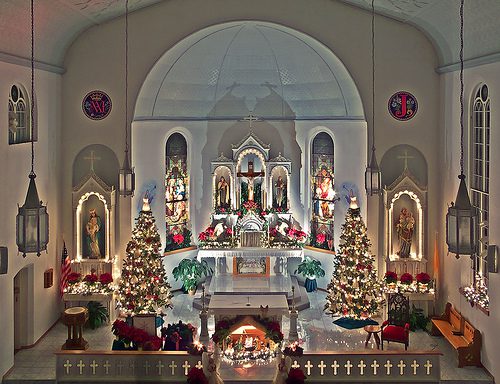The Sacramental Approach to God and the World
A number of contemporary Catholic theologians and thinkers write about “the Catholic imagination,” also called “the sacramental imagination.” A very concise definition of the Catholic imagination is this one:
“Catholic imagination refers to the Catholic viewpoint that God is present in the whole creation and in human beings, as seen in its sacramental system whereby material things and human beings are channels and sources of God’s grace.” (Citation and article HERE)
American priest and sociologist Andrew Greeley is credited for popularizing the concept in his book Catholic Imagination. He begins this book by saying:
“Catholics live in an enchanted world, a world of statues and holy water, stained glass and votive candles, saints and religious medals, rosary beads and holy pictures. But these Catholic paraphernalia are mere hints of a deeper and more pervasive religious sensibility which inclines Catholics to see the Holy lurking in creation. As Catholics, we find our houses and our world haunted by a sense that the objects, events, and persons of daily life are revelations of grace.”
It is very important to understand that the concept “imagination” used here is not in the sense of something fanciful or fictitious. Rather, it is used in the sense of how we image reality and so interpret the reality of God and the world. If it is helpful, one can use different terms for the Catholic imagination, such as the Catholic vision of reality.

Those who were raised Catholic do not always understand how this “Catholic way” of seeing things differs in certain ways from how Protestants see things. Why, for example, do Catholic churches typically have statues and candles and crucifixes and holy water and incense and in general use a lot of “stuff” in worship and a Baptist church has none of these things? Proponents would say it’s a different way of approaching God; the Catholic way is more symbol and creation friendly and the Protestant way is more symbol and creation cautious.
Also, a distinction can be made between the terms Catholic imagination and sacramental imagination. Those with a Catholic imagination or approach also have a sacramental approach; but not everyone with a sacramental approach are Catholic. For example, poets and artists use a lot of “stuff” to convey beauty and meaning, and even God. They have a kind of sacramental imagination, whether they are Catholic or not. But the Catholic Church with its 7 Sacraments and its “sacramentals,” and with all its “stuff” which remind and point to God is perennially sacramental.
Catholic educator Fred Herron makes the following observations about the Catholic imagination (in Wood, Waterfalls and Stars: Catholic Schools and the Catholic Imagination, pp. 101-103):
“One leading theologian has suggested that there are ‘various characteristics of Catholicism, each of which…it shares with one or another Christian Church or tradition. It is their distinctive combination in Catholicism which gives it a unique flavor. Nowhere else except in the Catholic Church are all of Catholicism’s characteristics present in the precise configuration in which they are found within Catholicism.”
So Herron, based on previous authors, names 8 characteristics of the Catholic imagination:
- The first characteristic of Catholicism is its benevolent understanding of the human condition…
- A second characteristic of Catholic Christianity is its belief regarding the sacramentality of life…
- Catholicism has an essential belief that humankind is made for each other and emphasizes community and relationship…
- A fourth characteristic of catholic Christianity is its commitment to history and tradition…
- Catholics appreciate wisdom rationality…
- Seeking holiness in our lives is an essential Catholic characteristic…
- A truly Catholic Christianity is committed to working for justice…
- James Joyce wrote…that ‘Catholic means here comes everyone”…
For the expanded quotation from Herron, click Here.
